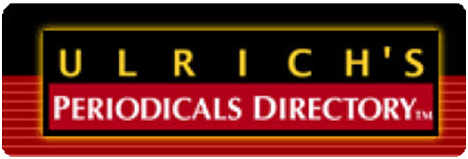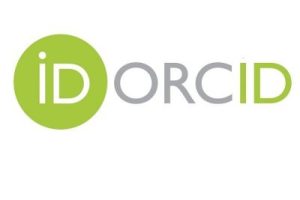МИСТЕЦЬКІ ІНТЕГРАТИВНІ ТЕХНОЛОГІЇ В ПОЛІХУДОЖНІЙ ОСВІТІ
DOI:
https://doi.org/10.14308/ite000695Ключові слова:
інтеграція, вокальне мистецтво, квест, комп’ютерні програми, мистецтво, мистецькі інтегративні технології, музейна педагогіка, поліхудожня освітаАнотація
У статті розглянуто деякі питання модернізації вищої педагогічної освіти, впровадження інноваційних підходів, розробки мистецьких інтерактивних технологій, змін класичних форм навчання майбутніх учителів. Встановлено, що поліхудожня освіта – це поліхудожнє виховання та розвиток, поліхудожній підхід до здійснення освітнього процесу. Поліхудожня освіта ґрунтується на універсальних можливостях мистецтва, його поліфункціональній природі. Проаналізовано поняття «інтеграція мистецтв» у поліхудожній освіті. Схарактеризовано рівні та види інтеграції. Розглянуто особливості інтеграції як інноваційної педагогічної технології. Представлено експлікацію інтегративних мистецьких технологій, розроблених на основі занурення у мистецьку спадщину, живого спілкування з творами мистецтва, діалогу з музейним предметом. Розглянуто квест як інтегративну ігрову мистецько-педагогічну технологію, що цікава для дітей та дорослих. Доведено, що розробка квестових мистецьких інтегративних технологій дозволяє успішно використовувати можливості та переваги комп’ютерних аудіовізуальних технологій у освітній роботі зі студентською та учнівською молоддю, мотивує до здобуття нових мистецьких знань, удосконалення виконавських умінь, творчого пошуку, самовдосконалення та самореалізації. Схарактеризовано низку спеціальних програм для створення веб-квестів, анімації, відео презентацій, написання фонограм, роботи з мікрофоном. Подальших розвідок потребує вивчення досвіду впровадження інтегративних мистецьких технологій в освітній процес середньої та вищої шкіл країн Європи, Азії, Америки, удосконалення механізмів поліхудожнього інтегративного впливу на різні вікові категорії учнівської та студентської молоді, розробка інтегративних мистецьких технологій поліхудожньої освіти дітей дошкільного та молодшого шкільного віку.
Завантаження
Показники метрики:
Посилання
1. Andrushchenko, V.P. (2010). The problem of forming a new teacher for a united Europe of the XXI century. Problems and prospects of the formation of the national humanitarian elite, 27 (31), Part 1, 45-53. Retrieved from http://repository.kpi.kharkov.ua/handle/KhPI-Press/11282.
2. Baranovskaya, I. G., Mozgalova, N. G. & Baranovsky, D. M. (2015). Problems of interactive communication technologies in the modern system of education. Information and communication technologies in modern education: experience, problems, perspectives, Part 2, 76-81. 3. Blonsky, P. (1979). Selected psychological compositions in 2 parts. Moscow: Pedagogics. 4. Davydov, V. V. (2005). Lectures on general psychology (textbook for students of higher educational institutions). Moscow: Publishing Center ―Academy‖
5. Lazarenko, N. I. (2018). New requirements for teacher’s professionalism with taking into account the processes of European integration. Scientific notes of the Vinnitsa State Pedagogical University named after Mikhail Kotsyubinsky, 54, 100-106.
6. Masol, L. M. (2003). Integration in the system of school art education and poly-arts teacher training. Psychological and pedagogical problems of the rural school, 4, 7-15.
7. Masol, LM (2001). Concept of artistic and aesthetic education of students in general educational institutions. Pedagogical newspaper, 12, 2-4.
8. Masol, L. M. (2002). Conceptual basis for the formation of the content of general artistic education in the context of state standards. Psychological and pedagogical problems of rural school, 1, 3-5.
9. Chako (2015). Microphone direction. Retrieved from https://chako.ua/reviews/napravlennost_mikrofona/.
10. Sokol, I. M. (2014). Introduction of quest-technology in the educational process. Zaporizhzhia: Aktsent Invest-treid.
11. Statkevych A. H. (n.d.). Web quest as an innovative project methodology for teaching a foreign
language. Retrieved from http://nniif.org.ua/File/12sagvky.pdf.
12. Shulgina, Ye. M. (2014). Methodology of formation of foreign language communicative competence of students through the technology of web quests (Dissertation of Candidate of Pedagogical Sciences).
Tomsk, National Research Institute of Tomsk State University.
13. Scholokova O.P (1996). Fundamentals of professional artistic and aesthetic training of the future teacher. Kiev: VIPOL.
14. Yusov B. (2001). Principles of constructing integrated poly-arts programs in fine arts. Art and Education, 3, 40-41.
15. Yusov B.P. (1995). On the interaction of arts in the development of children in integrated occupations. When all the art together. Poly-artistic development of students of different age groups. Teacher’s Guide. Moscow-Murmansk: ITsEV RAO.
</uk>
<en>
1. Andrushchenko, V.P. (2010). The problem of forming a new teacher for a united Europe of the XXI century. Problems and prospects of the formation of the national humanitarian elite, 27 (31), Part 1, 45-53. Retrieved from http://repository.kpi.kharkov.ua/handle/KhPI-Press/11282.
2. Baranovskaya, I. G., Mozgalova, N. G. & Baranovsky, D. M. (2015). Problems of interactive communication technologies in the modern system of education. Information and communication technologies in modern education: experience, problems, perspectives, Part 2, 76-81. 3. Blonsky, P. (1979). Selected psychological compositions in 2 parts. Moscow: Pedagogics. 4. Davydov, V. V. (2005). Lectures on general psychology (textbook for students of higher educational institutions). Moscow: Publishing Center ―Academy‖
5. Lazarenko, N. I. (2018). New requirements for teacher’s professionalism with taking into account the processes of European integration. Scientific notes of the Vinnitsa State Pedagogical University named after Mikhail Kotsyubinsky, 54, 100-106.
6. Masol, L. M. (2003). Integration in the system of school art education and poly-arts teacher training. Psychological and pedagogical problems of the rural school, 4, 7-15.
7. Masol, LM (2001). Concept of artistic and aesthetic education of students in general educational institutions. Pedagogical newspaper, 12, 2-4.
8. Masol, L. M. (2002). Conceptual basis for the formation of the content of general artistic education in the context of state standards. Psychological and pedagogical problems of rural school, 1, 3-5.
9. Chako (2015). Microphone direction. Retrieved from https://chako.ua/reviews/napravlennost_mikrofona/.
10. Sokol, I. M. (2014). Introduction of quest-technology in the educational process. Zaporizhzhia: Aktsent Invest-treid.
11. Statkevych A. H. (n.d.). Web quest as an innovative project methodology for teaching a foreign
language. Retrieved from http://nniif.org.ua/File/12sagvky.pdf.
12. Shulgina, Ye. M. (2014). Methodology of formation of foreign language communicative competence of students through the technology of web quests (Dissertation of Candidate of Pedagogical Sciences).
Tomsk, National Research Institute of Tomsk State University.
13. Scholokova O.P (1996). Fundamentals of professional artistic and aesthetic training of the future teacher. Kiev: VIPOL.
14. Yusov B. (2001). Principles of constructing integrated poly-arts programs in fine arts. Art and Education, 3, 40-41.
15. Yusov B.P. (1995). On the interaction of arts in the development of children in integrated occupations. When all the art together. Poly-artistic development of students of different age groups. Teacher’s Guide. Moscow-Murmansk: ITsEV RAO.
</en>
##submission.downloads##
Опубліковано
Як цитувати
Номер
Розділ
Ліцензія
This work is licensed under a Creative Commons Attribution-NonCommercial-ShareAlike 4.0 International License.






























